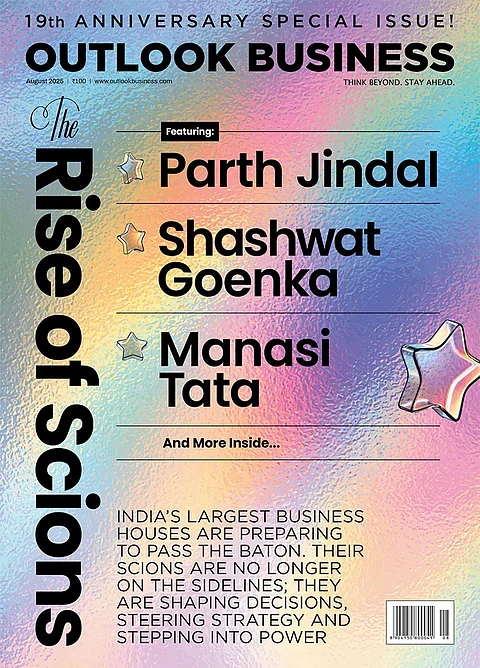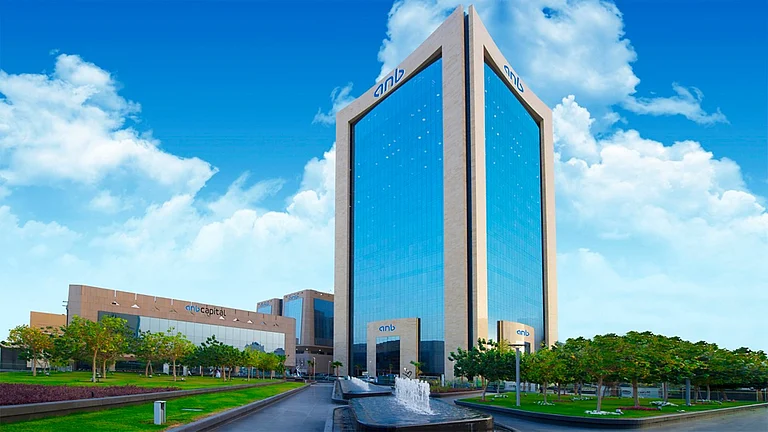In March this year, Prime Minister Narendra Modi inaugurated the “expanded world-class integrated Terminal 1 of the Delhi Airport.” In a press release. Prabhakara Rao, Group Deputy MD, GMR Group, which owns 64% equity in DIAL, used glowing phrases to describe T-1 – “a marvel of innovation and aesthetics,” “redefines the passenger experience,” and “a seamless journey” for passengers. The third phase allows T-1 to handle 40 million passengers per annum (MPPA), and Delhi Airport to stand among “elite global hubs, boasting a capacity of 100 MPPA capacity.” With a more than three-and-a-half times increase in area, and consolidation of Arrival and Departure terminals, T-1 hopes to bamboozle flyers with facial recognition systems, automated tray retrieval systems, 100 check-in counters, Individual Carrier System, and three dozen Self Baggage Drop kiosks.
Other parts of this phase included a new 4.43 km fourth runway, which makes it the only Indian airport to have four operational runways. The first-of-its-kind elevated cross taxiways reduce the time that passengers spend inside the planes that have landed. Delhi International Airport Ltd (DIAL), a consortium of partners that includes GMR Group, Airports Authority of India (AAI) and Fraport Germany, refurbished and realigned the British-era runway, which was built in the pre-Independence period, and used during World War II.
Amazing as it sounds, infrastructure projects like airports face several challenges, which need to be addressed and resolved by the CFOs and their finance teams. In candid terms, CMA Hari Nagrani, CFO & EVP, DIAL, admits that DIAL is having operative costs which is majorly fixed in nature, however the EBITA margin is low due to payment of 45.99 % revenue share to AAI as per concession agreement. Although the Delhi airport is under PPP model, the investments needed to develop Delhi Airport as per Master Plan and to maintain passengers’ delight during air travel is the responsibility of the airport operator. Under the agreement with AAI, DIAL shares almost half, 46%, of its revenues with the former authority, which is responsible for airports across the country. The airport needs to be managed with the rest of the revenues, which requires high degree of costs consciousness with utmost operational efficiency.

This is reflected in DIAL’s financial performance year on year excluding COVID Period when Aviation Sector was adversely affected. DIAL efficiently run the operation during COVID Period with minimum costs so as to keep funds for future as well as to continue with the expansion project of Terminal -1 amounting to Rs.12,500 crores approx. Due to better operational efficiency and bouncing of air travel globally , the performance of Delhi Airport improved significantly in the Year 2023.
Hence, cost management, which is the core skill and knowledge of the CFO, is crucial in this business. It is easy to get caught in a never-ending downward financial spiral. “The trick lies in how to manage costs to improve cash flows and EBIDTA. If the cash flows falter, it leads to higher loans, which puts further pressure in viability due to higher loans and interest payments. We need to rationalize costs,” explains a categorical CMA Nagrani. One of the first steps is to building a shared service centers across airports so as to do routine activities at a centralized place thus reducing manpower costs. In addition, digitalization and implementation of robotic automation process for recurring transactions also reduces the manpower costs as well time taken in the process.
Another strategy is to bundle contracts, and auction them to a single contractor across services. For example, it is costly to have three separate housekeeping contracts for three different airports. A bundled contract helps the single vendor, who gets the advantage of higher volumes, and DIAL gets a discounted price. “We initiated several bundling contracts across airports,” says CMA Nagrani. Energy, or electricity means utilities, comprises another major cost center, which translates into Rs 200 crore a year only for the Delhi Airport. DIAL has undertaken green initiatives, such as the use of solar power, constructing green buildings, and the use of LEDs in the entire airport which has resulted significant reduction in per unit costs of electricity. Delhi Airport is buying electricity from dedicated source of hydro power in Himachal Pradesh – which results in a saving of Rs 1-2 per unit as compared to buying directly from BSES. DIAL hopes to convert the Delhi Airport into zero emissions carbon neutral operations by 2030.

Another area that aims to managing cost is water consumption. Excellent rain harvesting ensures that “not a drop is wasted.” Water is processed and recycled for housekeeping, and even drinking. “In effect, these measures ensure that our annual cost escalations are lower than the inflation rate, or hardly 5-6%. We spend less and still offer a healthy habitat. I optimize the costs to generate a healthy bottom line,” explains CMA Nagrani.
Despite efficient cost management techniques, a large airport needs to raise money for expansion. This too is difficult, given the pressures on profits, and potential cash flow problems that can restrict the airport’s ability to pay the loans and interest. Even if there are adequate returns, they take time, and have a larger gestation period. Lenders are cagey. Even if they are excited because of the facts that DIAL is a PPP model, with state-owned AAI as a 26% partner, and Delhi Airport enjoys a monopoly status as of now, the interest rates are high. This is because DIAL has huge debts due to continuous expansion in several phases, which results in high interest burden.
Initially, DIAL depended on foreign investors to raise huge sums in the overseas bond market. “We made presentations on operational and financial performance of DIAL with future projections to win the confidence of prospective investors. We told the foreign investors that we could raise extra revenues from aircraft handling, non-aeronautical revenue and monetization of land available . We informed them that the Delhi Airport offered an opportunity to fund a large and monopoly asset that catered to millions of captive passengers. Even in April 2020 , we conducted roadshows in the US, the UK, Singapore, and Hong Kong to raise USD500 million. The oversubscriptions in overseas bond issues were 10-12 times,” says CMA Nagrani. DIAL is the only one Airport in India which has successfully raised funds from International Capital Market at competitive rates. Over time, as DIAL refinanced its bonds, maintained its credit ratings, the confidence was bolstered, and it became easier to raise funds.
Later, DIAL approached the Indian investors and, according to CMA Nagrani, raised approx.. Rs 3,700 crore through domestic bonds in the past two years. The peculiar aspect of both the overseas and domestic bonds was the bullet payment clause. For the first 7-10 years, the bondholders are only paid the interest amount and the principal is payable on maturity. This allows DIAL to freely invest the money in the expansion, get its benefit through tariff from the regulators, improve cash flows, and then redeem the bonds. “Now that the T-1 and other expansion projects are over, we can cater up to 100 million passengers, enhance passenger services, and can confidently commence the redemption of debts on maturity resulting reduction in interest costs in coming years,” says a happy and confident CMA Nagrani.
In order to improve the operational efficiency, DIAL is also using the latest technology wherein with less costs, more number of Pax and ATMs are being handled with better passenger experience. CMA Nagrani further mentions that in DIAL, CIPs, BLIPs, IDEA Factory, 5S have been implemented across all verticals resulting costs consciousness at all levels wherein innovation has resulted significant contribution in terms of revenue enhancement, process improvement and costs savings.












 Just one email a week
Just one email a week